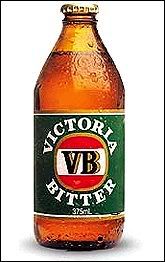The Shaman
First Post
Yes, you've made that point several times now - and you have my reply to it above. Shall we move on now?monboesen said:This is simply good dm'ing and has nothing to do with the monster or it's CR. I don't think anyone here has suggested you shouldn't use such tactics, all we are saying is that the former OM CR is to high, because it was forced to flee due to it's inability to actually challenge the characters in combat (which is what CR is a measure of).
Really? Is that what Mike Mearls did?monboesen said:I fail to see how changing a few powers and making it a better meleer (I actually think Mearl underestimated the revised OM CR) changes the way you run it. It can still do ecxactly what you described and if played like an intelligent (and maybe a bit cowardly foe) it would be it's natural way of operating.
Lessee...
The original ogre mage was not a "leader for ogres" - funny, there's no mention of that in the 1e AD&D Monster Manual, in either the entries for ogres or ogre magi. The only apparent connection between the two is that ogre magi speak their own language and that of ogres.Monster Makeover: The Ogre Mage said:Given its link to ogres, it would serve well as a leader for those creatures.
It's already been mentioned several times in one or the other thread that ogre magi are a representative example of oni, before a more detailed treatment was introduced to the game. "Boss Ogre" had nothing to do with the ogre mage.
The ogre mage's spell-like abilities aren't about offense at all - they are about guile and manipulation, about luring the unwitting or the careless to their doom. It has one truly offensive spell-like ability with which to effect a fair chunk of damage in a pinch - that's it.Monster Makeover: The Ogre Mage said:Now comes the ogre mage's offensive spell-like abilities. Sleep still has a HD limit, making it a poor choice against many parties. Charm person just clutters the list. The ogre mage rules by intimidation, not by magic.
The ogre mage had a niche in the game - as a mid-level mastermind with a suite of cohesive abilities ideal for stealth, subtlety and surprise. It's too bad that Mike Mearls never got that - a monster makeover to restore the ogre mage's abilities nerfed by the edition change might've been really cool. Instead he strips away the abilities that made the ogre mage what it was and replaced them with more combat stuff, leaving us with a creature that is nothing like its forebears.Monster Makeover: The Ogre Mage said:The ogre mage now has a clear place in the game. It leads ogres and other big, tough creatures, both as a mastermind and as a war leader in combat. Its abilities work best when it has allies around, and it is a shifty, difficulty to pin down target.
Unfortunately the ogre mage conversion to 3e was slipshod, its abilities watered down along with the magic system - I understand why you have the impression you do. As I said, making the 3e ogre mage more like its 1e forebear and its original oni brethren would have been a much better use of Mike Mearls' time.monboesen said:What I don't understand is where you think all these allies and minions of the OM come from. The monster has (or had) no social skills at all, a single use of charm person and the ability to change shape (but very little abiity to impersonate anyone).
I've covered this ground as far as I care to upthread, monboesen - I'll stand by my earlier comments.monboesen said:Let's assume for a second that it somehow had the ability to repeatedly gain minions and use the to weaken the party. Would that change the CR. Yes for each ENCOUNTER...
Last edited:

